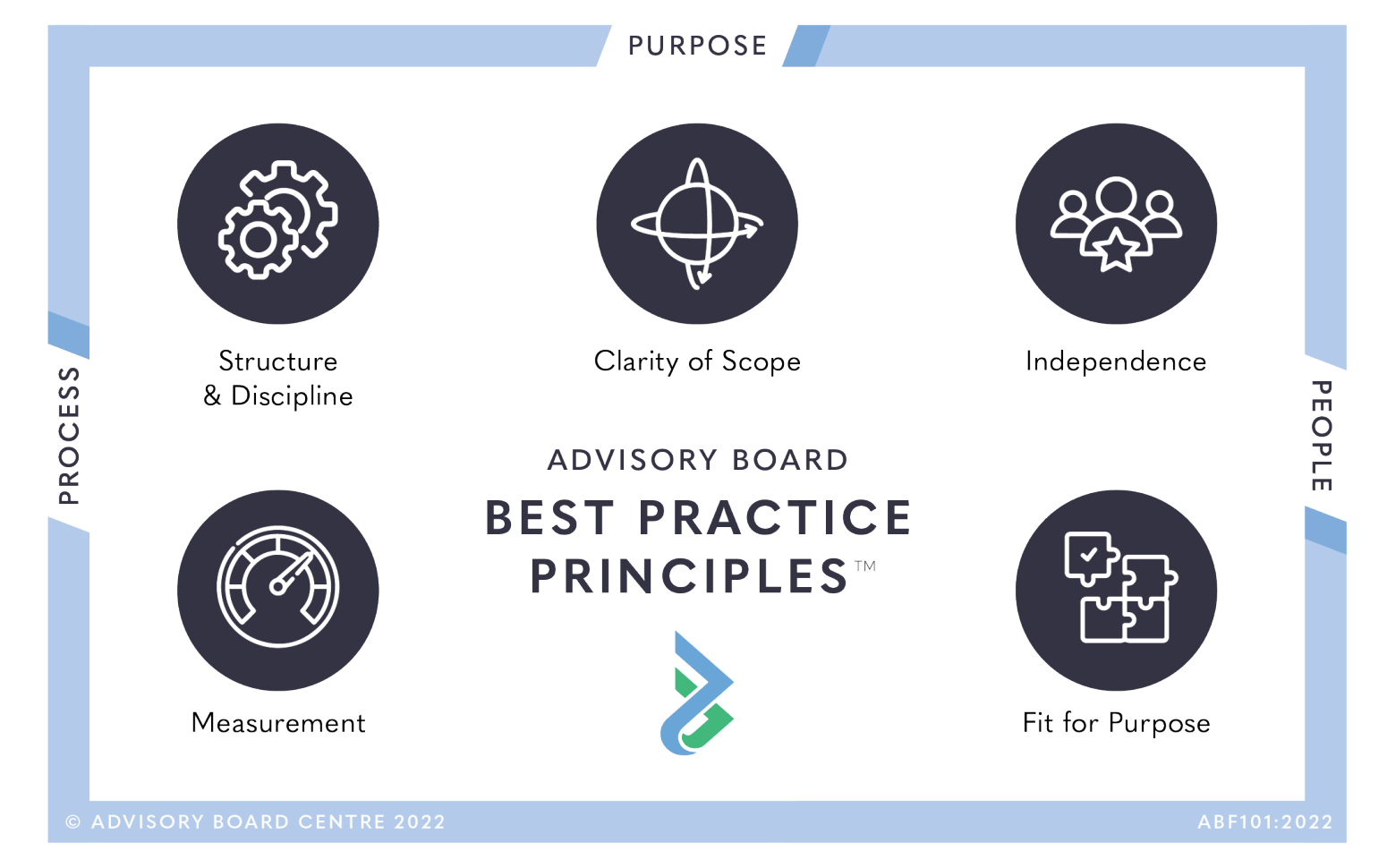
Clarity of Scope | Advisory Board Best Practice Principles
Fundamentals
Published 05 August 2020
The ABF101 Advisory Board Best Practice Framework™ has been carefully developed to respect and support the balance required between purpose, people and process to create a strong foundation to Advisor engagement.
The ABF101 Framework is based on five key principles –clarity of scope, independence and fit-for-purpose, measurement, structure and discipline.
Let’s explore the “Clarity of Scope” principle.
Clarity of Scope for Advisory Boards
Clarity is the quality of being coherent, intelligible, transparent and pure. In an advisory board context, clarity of scope allows for targeted focus, value transference and expectation management.
Within the ABF101 Framework, the Clarity of Scope principle underpins the Advisory Board’s PURPOSE section.
Clarity of Scope: The advisory board has a clearly articulated purpose and intended impact.
While this may seem common sense, when an organisation is pressing forward with new strategies, experiencing a period of change or caught up in the excitement of advisor engagement, there is a danger of assumptions, misalignment and unclear expectations.
Time, energy and focus may be inadvertently invested into the wrong activities increasing risk and reducing the positive impact of the advisory structure.
Many organisations will be implementing a formalised advisory board for the first time. Research from the Advisory Board Centre State of the Market Report found that 88% of business owners sought independent support to gain clarity on what they needed and advisor engagement options.
The inherent flexibility of advisory boards makes them an adaptable structure to fit the needs of any organisation. Ensuring that there is clarity of scope grounds the advisory board and provides a strong foundation allowing for impact and risk management aligned with the advisory board’s purpose.
Importance of Clarity of Scope for Organisations
- Promotes a common understanding of the purpose and alignment of the advisory board
- Establishes engagement parameters
- Delineates boundaries with governance and executive functions
Importance of Clarity of Scope for AdvisorY BOARD MEMBERS
- Understand the expected advisory board member contribution
- Understand the function and goals of the advisory board
- Understand the terms of engagement
- Know where the organisation is requiring value
CONSIDERATIONS FOR APPLICATION
- Mapping of stakeholders
- Advisory board charter
- Mapping of governance and executive functions within the advisory board charter
- Advisory board member and meeting code of conduct and ethics guidelines
- Advisory board member orientation
- Advisory board establishment and management process
- Advisory board review
- Meeting and decision-making matrix
- Advisor engagement documentation
Updated: June 2024, based on the ABF101 Advisory Board Best Practice Framework Third Edition.







